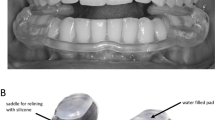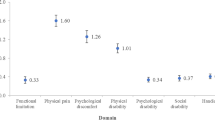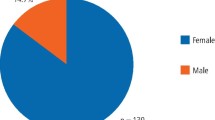Abstract
Questions:
What proportion of people undergoing orthognathic treatment to correct dentofacial deformities also have temporomandibular joint disorders (TMD)?
What proportion of orthognathic patients who do not have signs or symptoms of TMD preoperatively then develop TMD signs or symptoms postsurgery?
In individuals who have signs or symptoms of TMD preoperatively, how do these signs or symptoms change after treatment?
Data sources
MEDLINE, bibliographies, and reference lists of identified publications and reviews, were utilised, along with personal communications with experts and specialists.
Study selection
Randomised controlled trials (RCT), cohort studies and case–control studies were included if participants (of age 14 years or over) received orthognathic treatment. Studies were excluded if participants had either craniofacial syndromes or cleft lip or palate; a history of facial fractures from trauma; were undergoing orthognathic surgery purely to correct TMD; or orthognathic treatment and concomitant joint disc surgery; or, finally, if they were animal studies.
Data extraction and synthesis
Data extraction was conducted independently by two reviewers, and any discrepancies discussed until agreement was reached. A quality-assessment scale was constructed specifically for this study with sections for selection, performance, measurement and outcome, and attrition. A narrative synthesis is presented as meta-analysis was not either feasible or appropriate.
Results
A total of 53 articles (41 cohorts, 8 case–control and 3 RCT) were analysed for the review. Almost half (20) did not explicitly state whether the study was retrospective or prospective, it could be determined for the majority with 21 being retrospective, 28 prospective and, in the case, four articles not being sufficiently clear. There was great variability between studies in their assessment of any association between TMD and orthognathic treatment. This variability included how TMD was classified, the signs and symptoms recorded, and the time intervals reported. Perhaps most important was the great variation in the malocclusions in the studies. Although some studies included participants with a specific skeletal discrepancy, others included various skeletal deformities, so that comparisons were not always possible and, when carried out, could be a source of heterogeneity. Most studies that did report a reduction in TMD signs and symptoms after orthognathic treatment reported this association in skeletal Class II patients. A decrease was reported in some studies in the prevalence of signs and symptoms of more than 50% of people postsurgery, compared with the presurgery state, whereas fewer subjects with skeletal Class III or a high mandibular plane angle seemed to benefit from surgery. Thus, the participants’ skeletal deformity could have had a direct impact on TMD, especially after surgery.
Conclusions
The diversity of diagnostic criteria and classification methods used in the included studies makes interstudy comparisons difficult. Well-designed studies are needed that have standardised diagnostic criteria and classification methods for TMD.
Similar content being viewed by others
Log in or create a free account to read this content
Gain free access to this article, as well as selected content from this journal and more on nature.com
or
References
Macfarlane TV, Kenealy P, Kingdon HA, et al. Twenty-year cohort study of health gain from orthodontic treatment: temporomandibular disorders. Am J Orthod Dentofacial Orthop. 2009; 135: 692. e1–8.
Rinchuse DJ, Kandasamy S . Myths of orthodontic gnathology. Am J Orthod Dentofacial Orthop. 2009;136: 322–330.
Rinchuse DJ, Rinchuse DJ, Kandasamy S . Evidence-based versus experience-based views on occlusion and TMD. Am J Orthod Dentofacial Orthop. 2005; 127: 249–254.
Rinchuse DJ, Rinchuse DJ . The impact of the American Dental Association's guidelines for the examination, diagnosis, and management of temporomandibular disorders on orthodontic practice. Am J Orthod. 1983; 83: 518–522.
Luther F . Orthodontics and the temporomandibular joint: where are we now? Part 1. Orthodontic treatment and temporomandibular disorders. Angle Orthod. 1998; 68: 295–304.
Author information
Authors and Affiliations
Additional information
Address for correspondence: Salma Al-Riyami, Orthodontic Unit, UCL Eastman Dental Institute, 256 Grays Inn Road, London WC1X 8LD, UK. E-mail: s.alriyami@eastman.ucl.ac.uk
Al-Riyami S, Moles DR, Cunningham SJ. Orthognathic treatment and temporomandibular disorders: a systematic review. Part 1. A new quality-assessment technique and analysis of study characteristics and classifications. Am J Orthod Dentofacial Orthop 2009; 136: 624.e1–15
Rights and permissions
About this article
Cite this article
Kalha, A. Orthognathic treatment and temporomandibular disorders – part 1. Evid Based Dent 11, 82–83 (2010). https://doi.org/10.1038/sj.ebd.6400740
Published:
Issue date:
DOI: https://doi.org/10.1038/sj.ebd.6400740
This article is cited by
-
Intravenous lidocaine for effective pain relief after bimaxillary surgery
Clinical Oral Investigations (2017)



